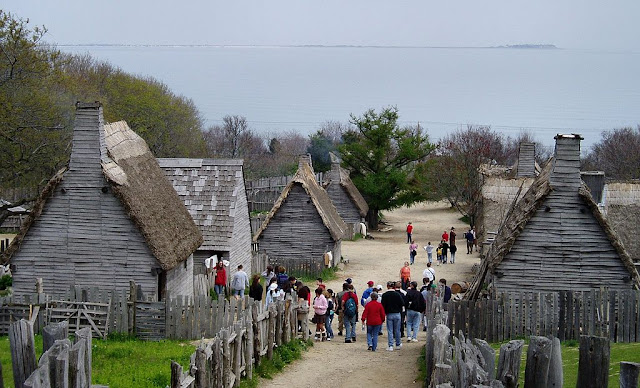Plimoth Plantation, founded in 1627, is a living history museum in Plymouth, Massachusetts, USA, that exhibits the original settlement of the Plymouth Colony established in the 17th century by English colonists, some of whom later became known as Pilgrims. They were among the first people who emigrated to America to avoid religious persecution and to seek religious separation from the Church of England.[1] It is a not-for-profit museum supported by Administrations , contributions, grants and volunteers.[2]
The re-creations are sourced from a wide variety of first and second records, accounts, articles and period paintings and artifacts,[3] and the museum conducts ongoing research and scholarship, including historical archaeological excavation and curation locally and abroad.[4]
In the 1627 English Village section of the museum, interpreters have been trained to speak, act and dress appropriately for the period.[5] At Plimoth Plantation they are called historical interpreters, and they interact with their 'strange visitors' (i.e. the modern general public) in the first person, answering questions, discussing their lives and viewpoints and participating in tasks such as cooking, planting, blacksmithing and animal husbandry.[6] The 1627 English Village loosely follows a time line, chronologically representing the calendar year 1627 from late March through November (the months the museum is open),[7] depicting day-to-day life and seasonal activities as well as featuring some key historical events such as funerals and special celebrations.
https://en.wikipedia.org/wiki/Plimoth_Plantation












